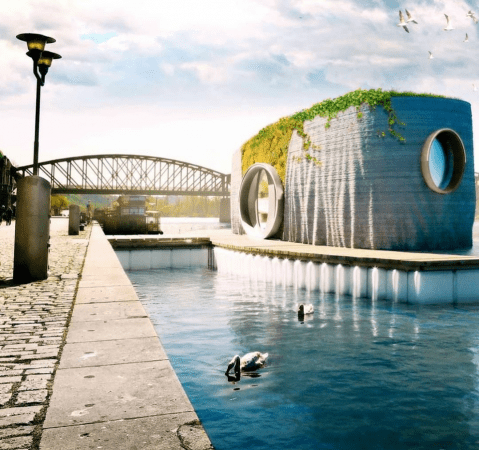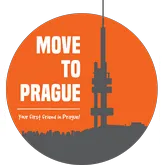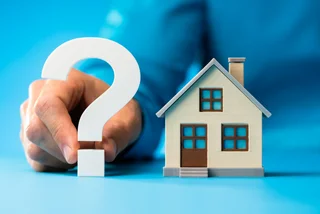Construction on Czech Republic’s first-ever 3D printed concrete house began over the weekend in České Budějovice.
Sculptor Michal Trpak, working with the building company Stavebni sporitelna Ceske sporitelny – Burinka, worked on putting together the prototype all weekend in České Budějovice. The concept was conceived by architect Jiří Vele.
The Prvok house was printed using a robotic arm building the concrete home at 15 centimeters per second. The concrete mixture used for printing isn’t your usual concrete. It’s enriched with nano-polypropylene fibers, plasticizers that improve plasticity and produce better organic shapes, and a setting accelerator. The mixture will harden after 24 hours.
Altogether, the house cost 3.5 million crowns to construct. Now that the prototype for the house is built, workers will continue to complete the house. On August 18, the 3D printed house will be displayed on a pontoon on Střelecký Island in Prague; in September, the house will be on display near Prague’s Náplavka for about a month, according to Ceske Noviny. The 35-ton house will be taken to Prague in three parts.

The special concrete house has three rooms: a bathroom with a toilet, a living room with a kitchen, and a bedroom, in a 43-square-meter area. The house, named Prvok (Protozoon), can remain on land or float on water, said Trpak. Unlike other brick houses, this 3D printed home will be built seven times faster than a traditional home.
It’s not just faster to build, it’s more eco-friendly, too, organizers say. The home is built to be partially self-sufficient and eco-friendly with technologies like recuperation, a shower that recirculates water, a green roof, and reservoirs for drinking and sewage water. Building the house will save resources, too. The construction will create less construction and demolition waste, a rising number across Czech Republic that accounts for 46 percent of total waste production in the country.
“Compared to conventional brick buildings, 3D printing also generates up to 20% fewer CO2 emissions, which the European Union aims to cut by 30% by 2030 (compared to 2005). It requires only about 25 workers to print one house (forty less than usual). The prices in serial production can hit half of the cost of a conventional passive house. The self-sufficiency delivers further operating cost savings,” says Libor Vosicky, CEO of Burinka, in a statement.
Looking for an amazing home of your own? Visit our newly launched Real Estate portal. Would you like us to feature your amazing home? Contact editor@expats.cz.












 Reading time: 2 minutes
Reading time: 2 minutes 


























